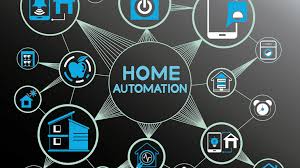
Automating your home lighting is not just about convenience; it’s about boosting efficiency, enhancing safety, and adding a dash of elegance to your living space. With the growing trend of smart homes, Lighting automation has become more accessible and affordable than ever before.
This guide outlines a simple and effective approach to automating your home lighting setup, helping you save both energy and time.
Why Automate Your Home Lighting?
Before jumping into the DIY steps, it’s important to understand why automated lighting is taking center stage in home technology.
• Energy Efficiency: Research suggests that automated lighting systems can save up to 30% more energy than regular systems. Lights turn off automatically when not in use, minimizing energy waste.
•
• Convenience: Manage lighting remotely using apps or voice assistants, eliminating the need to manually switch lights on or off.
•
• Enhanced Security: Scheduling lights to turn on during evenings while you’re away can deter potential intruders by giving the impression that someone is home.
•
Step-by-Step Guide to Automating Your Lighting
Step 1: Assess Your Needs
Start by considering which rooms or areas would benefit most from automated lighting. Common choices for automation include living rooms, kitchens, outdoor spaces, and entryways. Knowing your specific needs will guide you in choosing the right devices.
Step 2: Choose Your Smart Lights
There are numerous options in the market, such as smart bulbs, smart plugs, or dimmer switches. Opt for smart LED bulbs as they are energy-efficient and come with built-in features like color-changing options and dimming.
Step 3: Select a Hub or Stay Hub-Free
A smart hub can connect and manage multiple devices in one place. However, many smart lights today operate independently via Wi-Fi or Bluetooth, which means you can opt out of purchasing a hub if you’re just starting small.
Step 4: Install and Pair Your Devices
Install the smart bulbs or switches in the desired areas. Follow the manufacturer’s instructions to pair your devices with your smartphone via their app. Most apps will walk you through connecting to your home Wi-Fi and setting up control options.
Step 5: Set Schedules and Scenes
Leverage the app to set schedules for your lights, like turning them on at sunset and off at bedtime. Experiment with scenes for mood lighting, such as “movie night” or “dinner date.”
Step 6: Integrate with Voice Assistants
Link your lighting setup to a voice assistant like Alexa, Google Assistant, or Siri for seamless control using voice commands.
Lighting Automation is the Future
DIY home lighting automation is no longer a luxury; it’s a practical solution for modern homeowners. With a few well-placed smart devices, you can transform your living space into a smart haven that caters to your lifestyle.
Whether for efficiency, convenience, or aesthetics, automated lighting can truly elevate your home experience.

